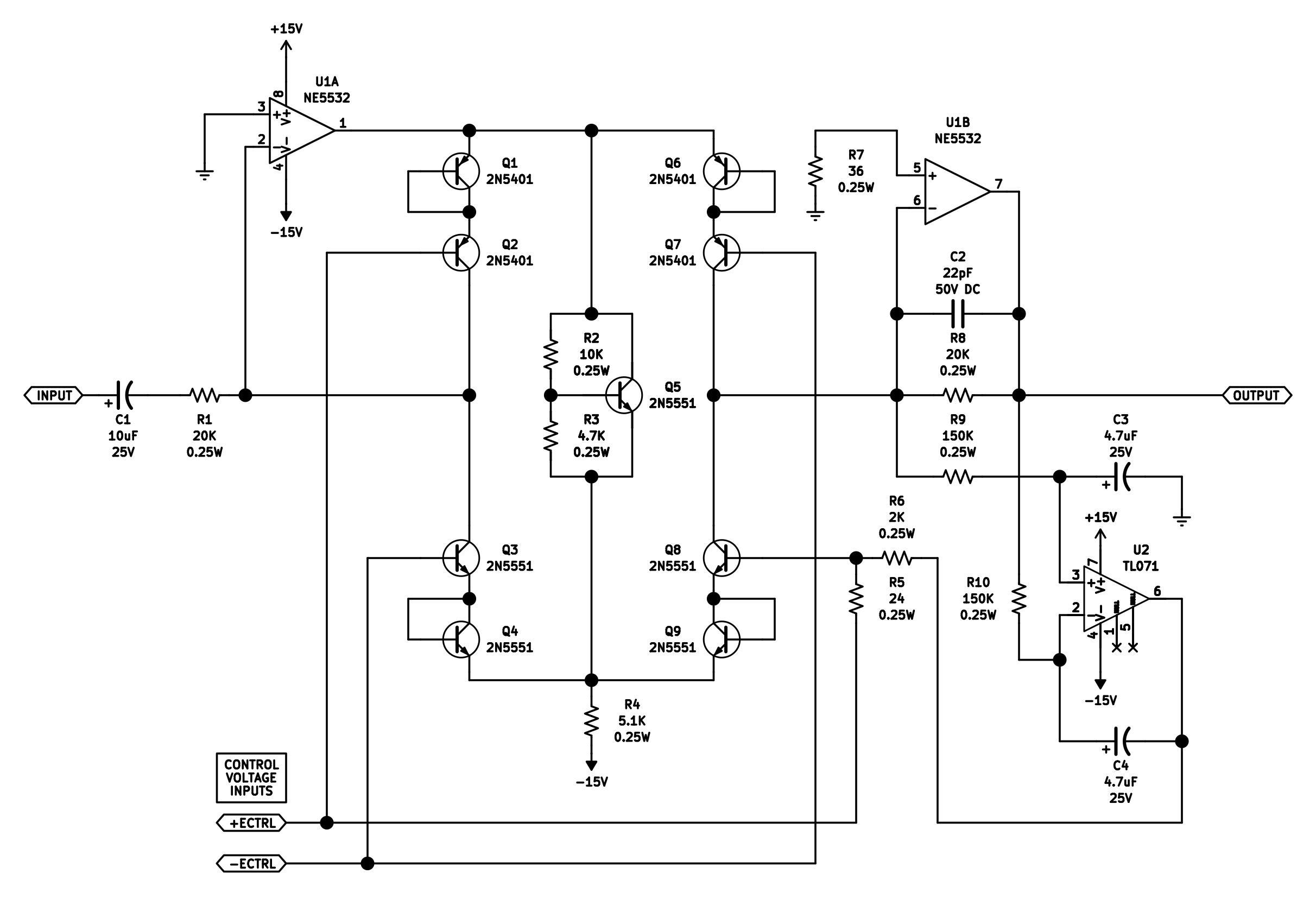Blackmer VCA With Auto−Trim
This is a discrete circuit of Blackmer VCA with “auto-trim” circuit that will allows to achieve low distortion levels with no external adjustment. The auto-trim circuit will also compensate for post-reflow symmetry shifts.
Theory and Operation
The THD that results from VCA asymmetry is a second harmonic in nature, since it results from gain mismatch between the positive-going half of the gain cell and the negative-going half. Any audio frequency signal that is distorted by this mechanism will have an induced DC offset, which results in a net DC current through R8 (the trans-impedance amplifier’s feedback resistor). The correction of the VCA’s symmetry is accomplished by sensing R8’s net DC current through a differential integrator and using this error signal to servo out the VCA’s asymmetry. R6, the 2 kilo-ohms resistor connected to the symmetry port, works in conjunction with the VCA’s R5 24 ohms resistor to provide a 83:1 attenuator that reduces the effect of U2’s input referred noise. In the auto-trim circuit configurations, it is possible for the voltages across C3 and C4 to be in a polarity opposite that which the capacitors are specified for, but this voltage will not exceed 200 mV, and should not present a problem.


